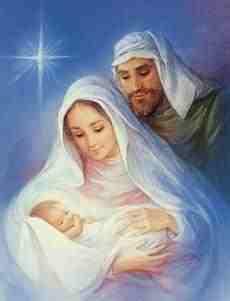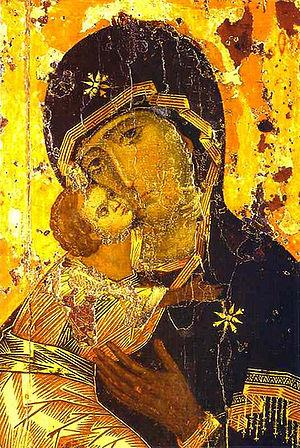
The image comes from my Sunday School days of long ago. Mary is pale and pure, always in blue, probably to match her distinctively blue eyes. Her head is draped with a white cloth, somewhat like the dupattas I’m so familiar with. She is sweet, submissive, and not a little frail. She looks a bit like the wind could blow her away as she sits in reverent awe of the wee one in her arms. Joseph is always standing. “Does he never sit” asks the irreverent child in an audible whisper.
And of course there are ox and ass and sheep and shepherds and a dirty stable. Because that’s the story that made its way into 20th century Sunday School classes, no matter how erroneous it is.
Mary, just a girl, a teenager who said ‘yes’. Just like you or me.
And then I meet Eastern Orthodoxy and the image goes from white and blue to brilliant golds and reds, deep greens and oranges. I’m aghast! Where is my wee Mary? Where is my sweet Mary?
It turns out she doesn’t exist in the Eastern Orthodox church. Not that Mary. The Mary I’ve been introduced to is a warrior. She is the Theotokos. The God-bearer. She is far more than the young thing that said yes to the angel Gabriel.

I have been introduced to the woman to whom Elizabeth cried “Blessed art thou among women!” and “From now on, all generations will call you blessed!” These are powerful words, words that many in Christendom have forgotten, for I’ll be honest – I’ve not heard Mary, the mother of Jesus, called blessed once in the past 20 years in any protestant church I’ve attended. She’s not mentioned but on Christmas, and then only in the scripture passage read during the Advent season.
Mary, who both nursed the Christ-child and wept with tears that pierced her soul at his blood stained body on the cross. Mary who urged Jesus to intervene at a wedding. Mary who scolded Jesus for staying behind in Jerusalem, worried sick was she at her son’s disappearance.
And I can’t help thinking, she must abhor the controversy about her. She must shake her head in despair at the extremes that emerge when it comes to views of her role in Christianity. The skeptic in the west who fears any mention may lead to an out of control adoration and the superstition in the east that can lead to a view that puts her on equal footing with God.
So I ask and I search to find out more about this new Mary, who bears no resemblance to the old Mary, the one I was so comfortable with, who was so safe.
I read and I question and I first find what the Orthodox do not believe. They do not worship Mary. They venerate her — just like they don’t worship icons, they venerate them. They hold them in high regard and respect, they are careful in the ways they treat them, careful not to treat them with apathy and disregard. The Orthodox do not believe Mary was born without sin. Nor do they believe that she is “co-redemptor” with Christ.
And then I move farther and I find that Mary is a picture of what it is to become Christ-like. As the bearer of God, the Theotokos, she represents a willingness and humility to bear the Son of God. She, just as all humans before and after her, had free will. She used that free will to say “I am the Lord’s servant. May it be to me according to your word.”
Mary was a precious and contributing member to the early church, cared for by the apostles and loved by early believers.
It turns out when it comes to Mary, I am not a Reluctant Orthodox, but a hard-core believer that this woman who exudes strength, humility, truth, and the deepest obedience is worth respecting and loving. I am grateful for a fresh view, a new view of Mary. She is, after all, the Mother of my Lord.

